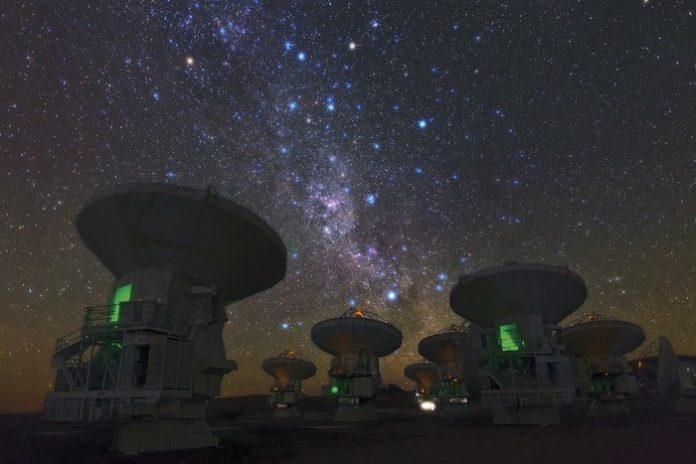The ALMA telescope has located a galaxy with spiral morphology, which was created just 1.4 billion years after the Big Bang – the oldest ever recorded
The Atacama Large Millimeter/submillimeter Array, better known as ALMA, is located in Chile. The site is one of the darkest places on Earth, relatively absent of light pollution. It allows researchers to glance into the surrounding universe with immense accuracy. Recently, data from the ALMA has enabled astronomers to guess at how gaseous clouds form stars and the age of the existing universe itself.
The significance of spiral morphology
This time, researchers have discovered one of the oldest galaxies. The spiral morphology of this galaxy was created only 1.4 billion years after the Big Bang. It has arms extending 15,000 light-years from the centre of the galaxy.
The Milky Way, our own galaxy, has a spiral form too. This means that there is a cluster of stars in the centre, known as the ‘bulge’, while two arms have a scattering of other stars and planets.
The arm on the newly discovered galaxy is one third of the size of the Milky Way Galaxy.
Tsukui and his supervisor Satoru Iguchi, a professor at SOKENDAI and the National Astronomical Observatory of Japan, noticed a galaxy called BRI 1335-0417 in the ALMA Science Archive.
The galaxy existed 12.4 billion years ago and contained a large amount of dust, which obscures the starlight. This makes it difficult to study this galaxy in detail with visible light. On the other hand, ALMA can detect radio emissions from carbon ions in the galaxy, which gave the team a way to investigate what is going on.
‘Clear evidence’ for the first time, ever
Takafumi Tsukui, a graduate student at SOKENDAI and the lead author of the research paper published in the journal Science, said: “I was excited because I had never seen such clear evidence of a rotating disk, spiral structure, and centralized mass structure in a distant galaxy in any previous literature.
“The quality of the ALMA data was so good that I was able to see so much detail that I thought it was a nearby galaxy.”
The estimated total mass of the stars and interstellar matter in BRI 1335-0417 is roughly equal to that of the Milky Way.
Satoru Iguchi, a professor at SOKENDAI and the National Astronomical Observatory of Japan, said: “Our Solar System is located in one of the spiral arms of the Milky Way.
“Tracing the roots of spiral structure will provide us with clues to the environment in which the Solar System was born. I hope that this research will further advance our understanding of the formation history of galaxies.”











